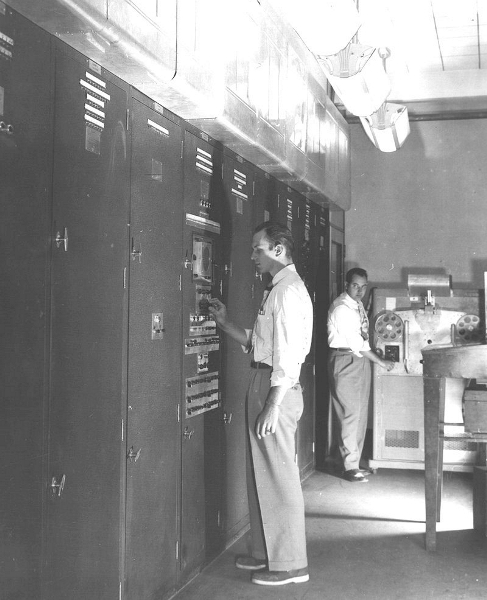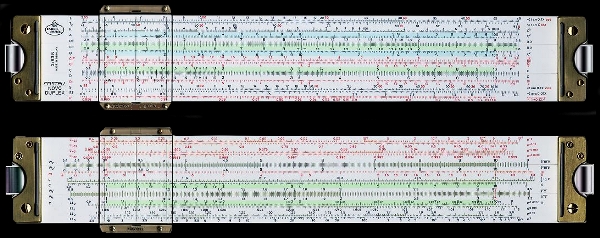A Little Music and Computer History
With My Own Warped Take on It
This is a little history of how my music and I got to where we are. There's some more related information in the notes for Album 22 and Album 23.
The key fact is that without my computers there is no way I could be making the songs. So - we'll start with a trip down memory lane as to how I got started with computers - and maybe learn a little eye witness history in the process because computers and I are in one sense the same age.
The first device we'd recognize as a "real digital" computer was EDVAC which was proposed in 1944, funded in 1946, and delivered in 1949. (I too was delivered in 1949.)
EDVAC used binary arithmetic and was a stored program computer - the first. Until then, all the previous computers had to be re-wired with patch cords for each new program. Here's a view of "programming" on ENIAC .
EDVAC changed programming for good and computer technology took off from there.
My first encounter with "computing machines" was my dad's Remington Rand 99 "adding machine."
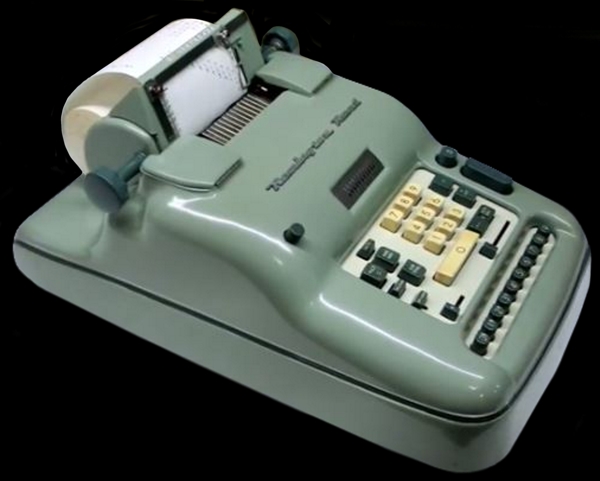
The model 99 was the super computer of the mechanical adders as it could also multiple and divide. There is an amazing video on YouTube that shows a beautifully restored one in operation. I can't think of any other mechanical machine that was as complex as the 99. The video shows it running with the case off. It was truly a magnificent mechanical beast.
I loved the thing not only for it's sheer complexity, but also for what it could do. But - it weighed half as much as I did, made enough noise so you could hear it running anywhere in the house, vibrated so bad it shook things off the desk, and had a serious power cord to run the motor. And - it caused interference on the TV. In other words - it wasn't very portable.
One of my uncles (chemical engineer in Houston) came to play golf with my dad. I saw "something" in his briefcase. He said it was a slide rule and you could do calculations on it. Ten minutes of instruction from him and I HAD to have one. Back to my helpless parents. They recognized "the look" and asked, "Now what do you want? And NO!"
I was persistent (obnoxiously so) and a couple of weeks later, I was the proud new owner of a Keuffel & Esser Log Log Decitrig Duplex Slide Rule - the super computer of the slide rule world back then. I couldn't locate a very good picture of one, (mine sadly has long disappeared,) but below is a photo of the front and back of a similar "slipstick" with essentially the same scales.
Slide rules couldn't add or subtract, but they could do some pretty serious calculations. Check out What Can You Do With a Slide Rule? and Slide Rule Course .
It didn't take me long to acquire a really cool circular version also.
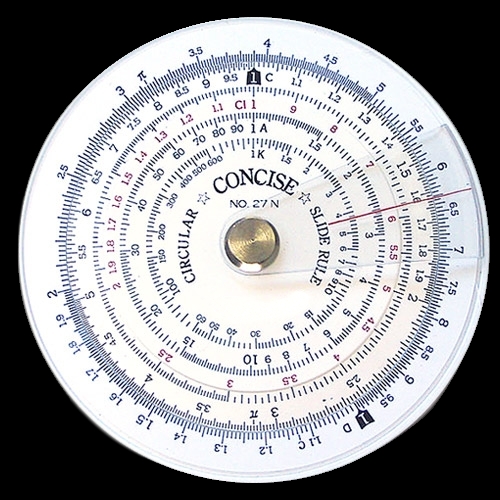
I got by for a year or so, then the latest Heathkit catalog showed up. They were selling computer kits!
I'd been building their stuff left and right - ham radio, hi fi amplifiers, test equipment, etc. They had two kits - the educational EC-1 which sold for about $200 and the H1 that went for around $1000.
I knew the H1 model was totally out of reach (initially - I'd have to work hard on the parents.) But - back to the folks - and adding in what I'd save, the EC-1 kit arrived in the mail. It was a lovable monster with 17 vacuum tubes that operated as 9 operational amplifiers .
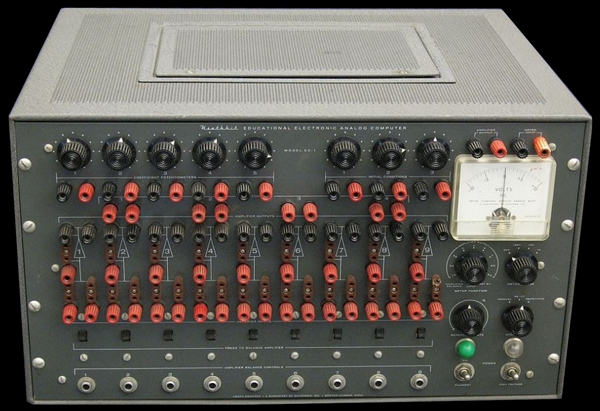
Unlike a digital computer, it didn't count anything. It was an analog computer . What it did was modify voltages. Doesn't seem like much, but you can actually do some pretty neat things . You set it up by specifying the input voltages to a circuit, specifying what each stage should do with the signal (add, subtract, multiply, divide, invert, exponentiate, integrate, log, log/log, trig, etc.,) and measure the final answer as another voltage with a precision voltmeter or an oscilloscope. Read the article about the restoration of one and check out the bouncing ball graphic on an oscilloscope.
Once I had it all soldered up and assembled, I got busy figuring out how to use it. Basically, it was an electronic slide rule. You mostly did the same sort of calculations on each. The big difference was that it was multiple slide rules - the answer from one became the input to the next one in the chain or could loop back to an earlier stage. With 9 Op-Amps you effectively had nine slide rules that could all work together.
I figured I needed to cook up something to justify the computer's existence (and my continued existence.) My dad was in the road construction business, so the first useful thing I did was to "program" (patch cords and plug in modules) a way to calculate the amount of base material needed for a cul-de-sac.
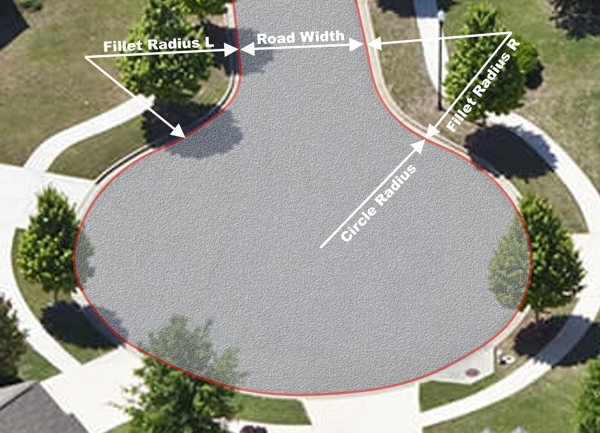
Basically, you set the parameters by adjusting voltages for the street width, the radius of the circular part, the radii of the two transition fillets, the final depth of the base, and the compaction factor for the particular base material. Then viola! The cubic yards of uncompacted material popped out. Magic! My dad was impressed - but also dubious. Not dubious of the program and the computer - dubious of me. He knew that I'd start hounding them for the H1, the big brother to my current computer.
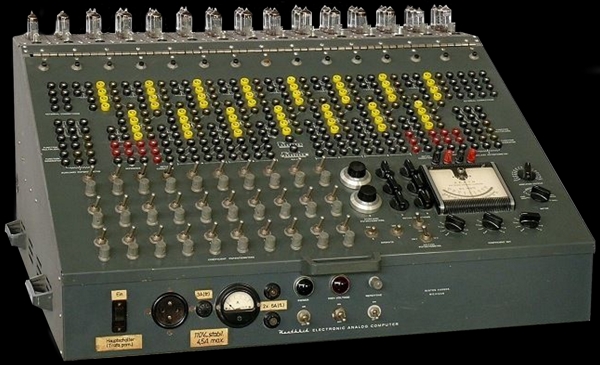
The H1 had 70 vacuum tubes and 15 operational amplifiers. It would have been a huge upgrade over the EC-1, but it was still a baby to the big analog computers. This is one that the government was using.

There was another one that I saw at the Socony Mobil Research Center in Dallas that they used to model underground petroleum reservoirs. I couldn't find a picture of it.
Before I could leverage my way (browbeat my helpless parents) to an H1, my computer world changed. In 1959 the local college got an IBM 650 Mainframe . A real digital computer. One of the first commercial mainframes.
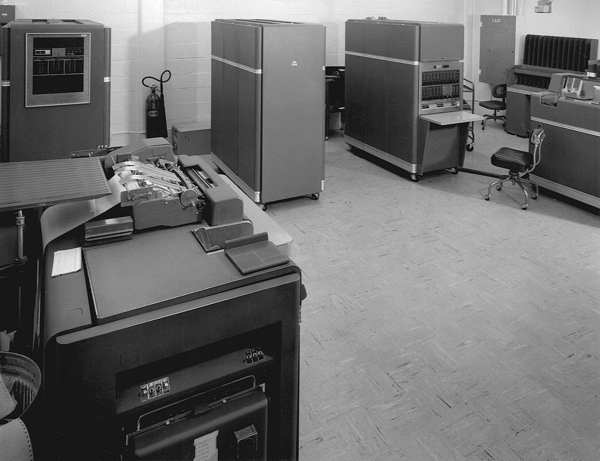
The control panel is on the far right with the shelf below it and the desk chair in front. The cabinets were filled with vacuum tube assemblies and you spent a lot of time figuring out which one had burned out and then replacing it.

Here's a close up of the control panel that you used to program and operate it - not particularly user friendly.
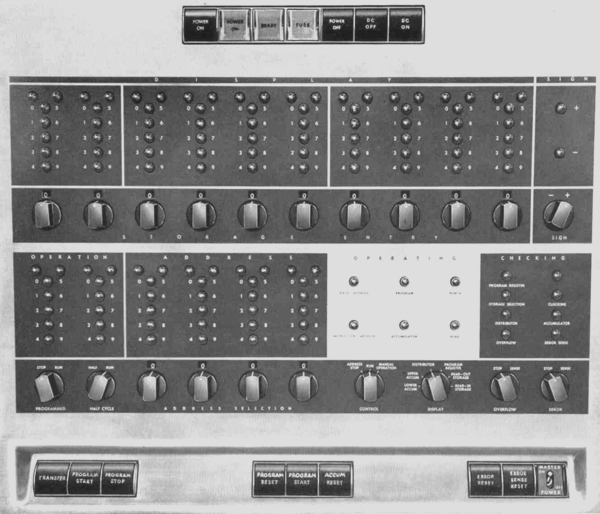
It used a bi-quintic number system. To specify a number you selected a range, 0-4 or 5-9, then 0, 1, 2, 3, or 4 to add on to 0 or 5 to complete the number. The system weighed from five to ten thousand pounds depending on the exact model.
I did enough Fortran programming on it to be competent, but my real forte was "SOAP" - the included assembly language programming module.
Over the years I've worked on a lot of big iron and a lot of PC's. I've dealt with more high level languages than I can count, but my first love has always been assembler. I've written operating systems, graphic drivers, embedded systems, spreadsheets, word processors, and even an accounting program in assembler.
My love for it is two fold. One, you don't have to work around any quirks of a high level language - and they've all got their "GotCha's." And two, nothing is as fast as a lean and clean assembly level program.
Years ago, during a stock day trading venture, I wrote a stock analysis program that combed through a day's market trades looking for trends that might make a few bucks. The first version was written in a complied version of Basic and took 14 hours to run. After the test period, I re-wrote it in pure assembly language. It ran in 27 seconds!!
I've watch computation develop from my dad's adding machine to generation after generation of supercomputers. Arguably the first supercomputer was the Control Data 6600 Supercomputer .
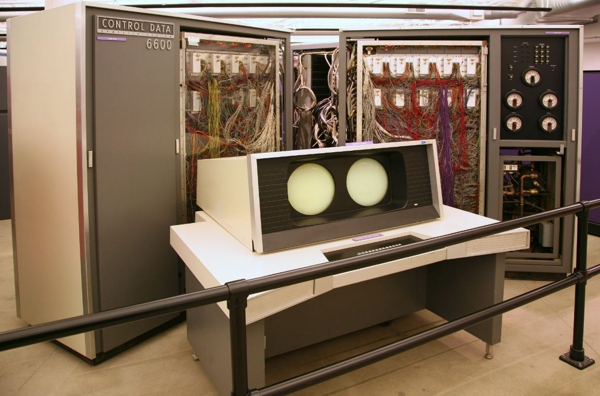
I first worked with one at the University of Texas in the 60's. It was 3 times faster than any other computer - and could perform 3 million floating point operations a second. The current record holder is called the Summit Supercomputer and does 200 million billion floating point operations a second ( FLOPS - Floating Point Operations Per Second - a floating point operation is for example multiplying two large numbers together.) Summit is almost 67 billion times faster than the 6600. Incredible!
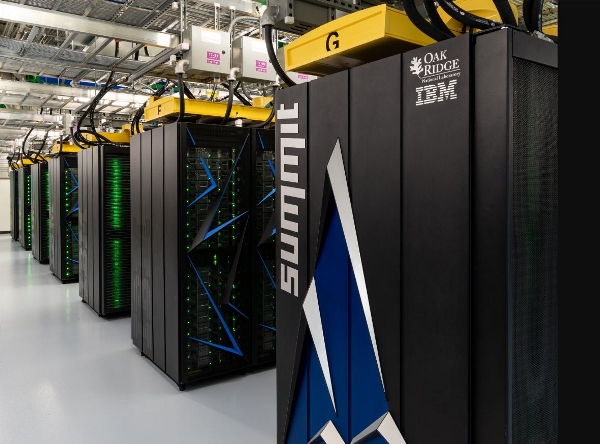
On mixed calculations it's hit almost 2 billion billion operations a second working on a genome project. Within the next year or at most two years, both the US and China will have machines that can do floating point operations at a billion billion rate per second - one quintillion per second.
Even more amazing to me is the computer I'm writing this on. The "big computer" has multiple processor boards for a total of 32 cores, 64 threads, and when I get serious and switch from the current Windows partition to the Linux one, it will run at a maximum of 1.4 teraflops. That's 1.4 million million floating point operations a second. Almost a half million times faster than the 6600 original supercomputer. Perhaps the most amazing thing is that I built it up for less than $5,000. It would have been the fastest computer in the world up until about 2000.
Just as computers have progressed enormously, so have music synthesizers - mostly because of the same progress in computers. Heck, my music keyboards alone would run rings around the Control Data 6600. My watch would probably outrun it. A smart phone is a portable pocket size supercomputer from not many years ago.
I first started looking at music synthesizers in the early 60's. The Moody Blues were having good success with a Mellotron - a tape based system that was mostly used to produce string sections. The later 60's saw the arrival of the first Moog Synthesizers . They were all solid state but had a lot of limitations and were expensive. They were also a patch cord nightmare - ala my old analog computer - which is basically what they were except designed for music instead of computation.
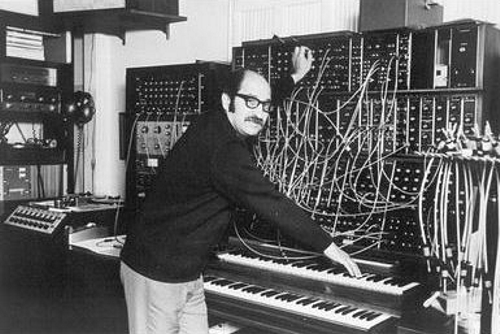
They were modular with a long list of add-ons. Note the oscilloscope about the module array cabinet in this next photo.
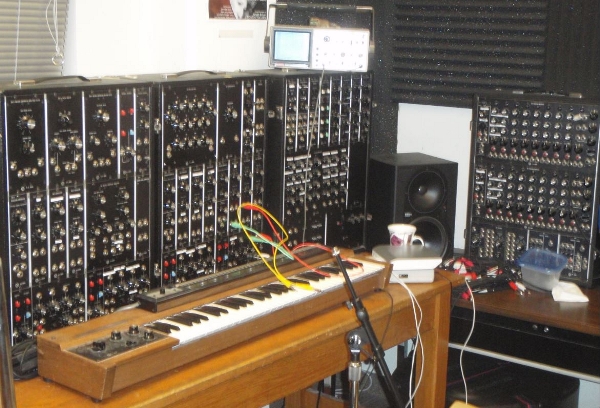
They kept gaining in sophistication but were still a rat's nest of patch cords.
One more photo of a slightly newer synthesizer array. This one is preserved in a museum.
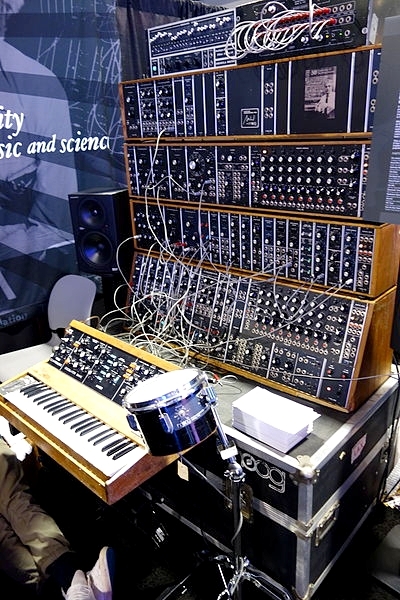
Digital synthesis was starting to come of age. Here's Graeham Goble with some digital synthesis equipment, although there is still a couple of patch panels around.
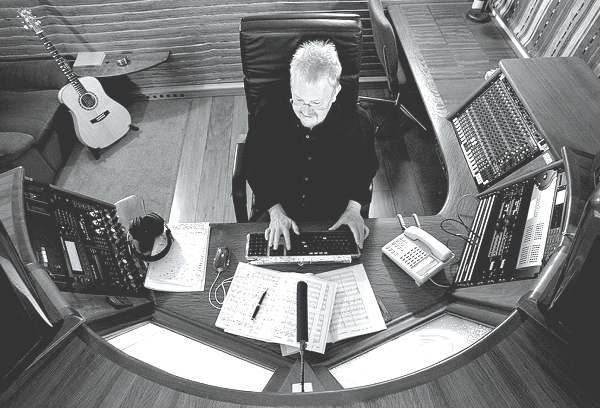
I like his custom working area. Mine has been pieced together from IKEA.
Finally, you get to what I'm doing. All my patch cords are handled with mouse clicks. My synthesizers are all in software. All of my post production is handled on the computers.
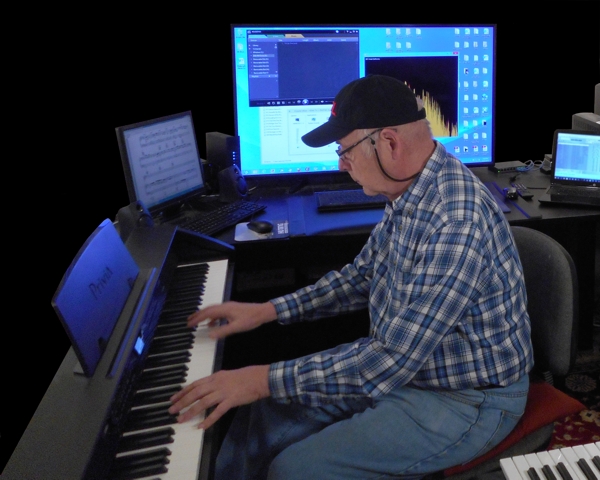
Is it exactly the same? No - but it's pretty close. A little is probably lost. When the switch was made from tube amplifiers to transistorized ones, the sound changed a little. I've never heard anything that sounds quite like Lonnie Mack's Magnatone Amplifier - and I've tried a lot to duplicate it digitally.
My music is a little different from the original synthesizers, but I've got most, probably 90% of the capabilities of all the old systems - and mine is a mouse click away. It's also very inexpensive in comparison - particularly for the software I've written myself.
Reeves
Copyright © 2022 Reeves Motal Music. All Rights Reserved
Last Updated: Thursday, December 22, 2022, 1:59:37 AM CST



